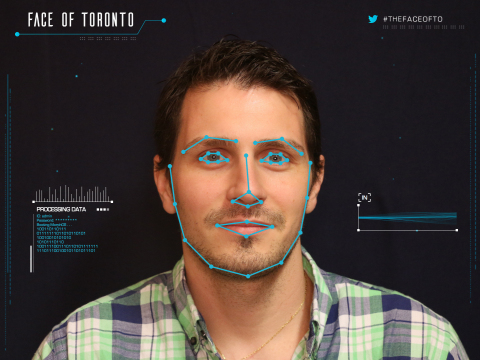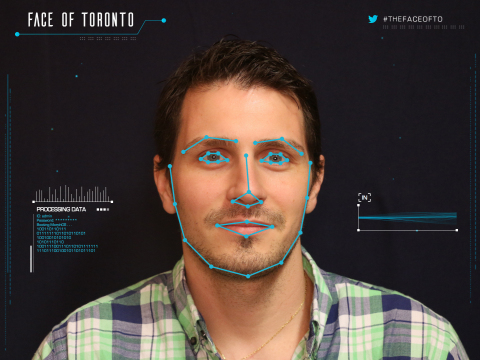TORONTO--(BUSINESS WIRE)--When you look at someone, what do you see? The details and nuances of what our brains process help us identify, relate to and store impressions of faces and objects. How we perceive, interpret and remember the world around us is part of what makes us human. But what if computers can be taught to do the same?
On Saturday night, Toronto-based software studio, Architech, will present the art of what’s possible through a computer’s “eyes” at the 10th annual Scotiabank Nuit Blanche. The real-time installation, “The Face of Toronto”, is the first-ever large-scale interactive art exhibit to use deep learning to showcase the future of face-processing technology. Architech’s computer will create an amalgamation of thousands of faces of Nuit Blanche attendees, resulting in a massive digital portrait of what the computer has seen, perceived and interpreted - its “memory” - of “The Face of Toronto”.
“My team has spent months building out the advanced deep learning models that can now recognize individual keypoints with great speed and robustness in uncontrolled conditions, similar to the human brain,” says Dr. Foteini Agrafioti, Architech’s Chief Innovation Officer and founder of Architech Labs. “We’re using deep learning machines to process random individual faces and creating a unified whole. It’s both a fascinating peek at our present reality and a visual imprint of memories from one night in the city.”
About the technology
Deep learning, a subfield of machine
learning, teaches computers to learn like humans by simulating the way
the neurons of the brain are connected across a neural network. These
artificial networks give the machines an exponentially higher capacity
to absorb knowledge from data by performing in a fashion analogous to
the way the human brain processes, represents, and uses information. The
higher the amount of information the better deep learning works, making
the system virtually impossible to over-saturate. Perhaps even more
impressively, deep learning can model any type of data – like text,
video, or voice – across a wide spectrum of fields, allowing the
computer to combine and exchange insights from multiple domains and
eliminating the need for the trial-and-error results of human guesswork.
Recent examples of deep learning in the news include Google’s DeepDream
and Facebook’s DeepFace.
About Architech
@architechca
We partner with our
clients to create exceptional experiences through innovation,
human-centred design, and world-class engineering. We create inspiring
and engaging solutions – meshing digital and physical – to help our
clients innovate and grow. Our team of 125+ talented developers,
designers and strategists build solutions that include web, mobile,
cloud, smart client, machine and deep learning, IoT, analytics,
platforms, integration, and emerging technologies. www.architech.ca




